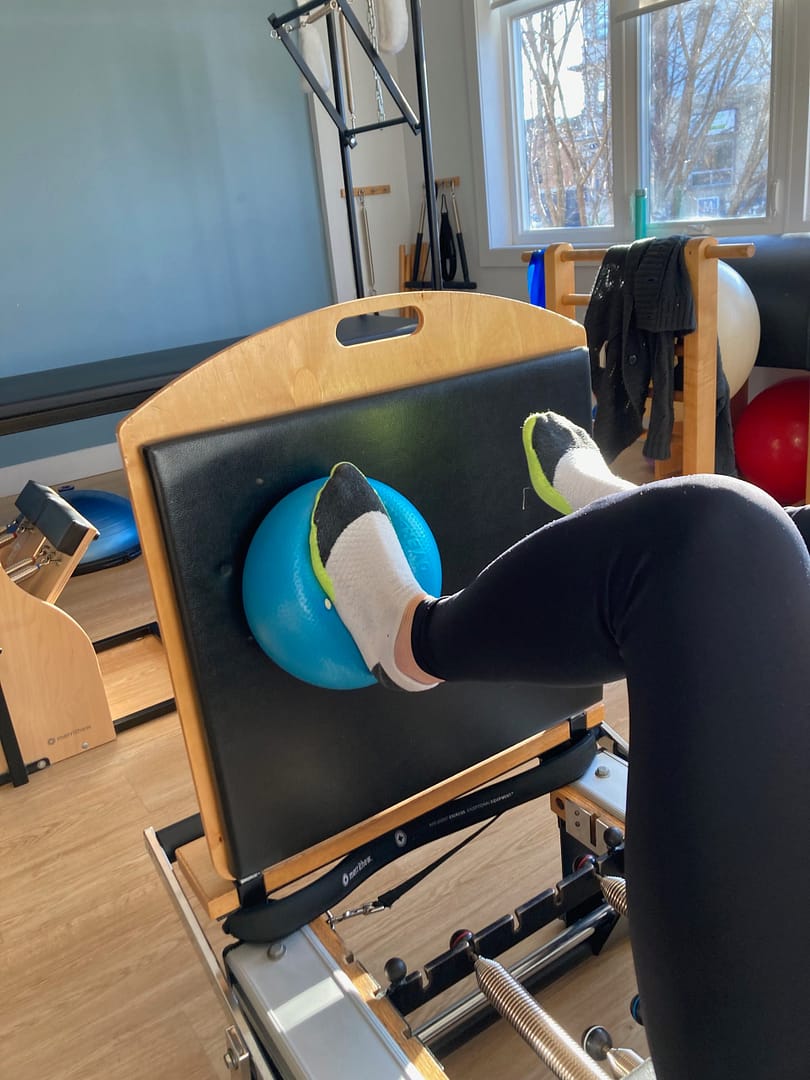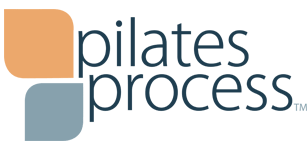by Laura Helsel with Dr.Julia Hamilton
Dr. Julia Hamilton is a prominent Sports Medicine doctor, co-owner of the bustling Toronto rehab clinic The Sports Health Experts, a U of T lecturer and she is also a Pilates Process therapeutic client. Notably, Julia has lived through the deeply frustrating yet clinically fascinating experience of repeating the same traumatic injury – an Achilles tendon rupture – on both the right and left ankles, 3 years apart.
Julia’s path of treatment and rehabilitation on each Achilles was vastly different and in our chat she compares the dramatic differences in the process of recovery.
______________

Laura: You had 2 Achilles tendon ruptures, one repaired surgically and one non-surgically. How much time between the two? Which was the preferred treatment?
Julia: I ruptured my left Achilles in 2019 playing tennis and had surgery to repair it 10 days after the injury. Unfortunately, I fell down the stairs at home 12 days after the surgery and re-injured it so was put in a cast for 2 weeks then into a walking boot for 8 weeks. It took about 6 months before I was able to walk at a normal pace with a minimal limp.
I ruptured my right Achilles in 2022 playing tennis and treated it non-surgically (or conservatively) in a walking boot with weightbearing on crutches immediately. Typically, patients are in a plaster cast in full ankle plantarflexion (pointed foot) for the first 2 weeks of conservative treatment but I was petrified of falling down the stairs again if I was non-weightbearing so insisted on a walking boot with crutches to reduce that risk. After the first 2 weeks, I went into the Vacoped Achilles Walking boot which was fantastic as the biomechanics are more normal than using a typical walking cast with a 4 inch heel lift. I was in the Vacoped boot for 8 weeks. I was able to walk normally barefoot almost immediately after coming out of the boot and had a much faster recovery than I did with surgery.
I advise anyone who suffers an Achilles tendon rupture to go the non-surgical (conservative) route where they are weightbearing in a walking boot with a heel lift from the start as long as it is an option. There are certain circumstances where a patient is not a candidate for conservative treatment such as if they avulse their Achilles (pull the tendon off the bone rather than ripping it in the middle of the tendon), if the complete rupture is missed and the patient is walking around with the two ends of the tendon separated, or if the patient re-ruptures their Achilles while trying to heal it conservatively during the first 6 months.
As long as the two ends of the tendon are put close together (hence the heel lift) the body will do the rest just the same way a cut of the skin heals if the edges are brought together.
Laura: How long was the acute, stay off the foot stage in both cases?
Julia: I was non-weightbearing (not even putting my foot on the floor) for about 4 weeks with my left Achilles rupture that was treated surgically followed by a fiberglass cast. I was weightbearing immediately with my right Achilles rupture that was treated non-surgically (conservatively).
Laura: How long until you felt you were in an active (i.e. strengthening) stage of rehab?
Julia: With my left (surgical repair), I was not able to do any rehabilitation or strengthening until almost 4 months after the injury. With my right (non-surgical), I was doing physiotherapy 11 weeks after the injury but had started using my peloton in the walking boot 2 days after the injury to maintain strength in my quads, glutes and hip flexors.
Laura: You’ve been dedicated to Pilates in the past year. What have you gained in terms of strength and resilience?
Juila: The first (and relatively quick) improvement I noticed was that I no longer walked with my left foot turned out after only a few sessions. I had been walking that way for 3 years since coming out of the walking boot and starting physiotherapy.
I have noticed a huge improvement in my hip biomechanics, the range of motion of my ankles and most importantly, a dramatic increase in the strength of my calf muscles with standing on my toes to reach the coffee cups on the top shelf of my kitchen cupboard! I also have noticed that my calf does not tighten up nearly as quickly when I have to walk quickly or I am walking for a long period of time. I also no longer get cramping of my calf muscles as easily as I used to.
Laura: What did you give up after these injuries that you’d most like to get back to?
Julia: I have been able to return to playing tennis which I am thrilled about but I do notice that I am slow (and weak) when pushing off to chase down a ball which before my injuries I would have got to easily. I have been able to return to all my previous physical activities (downhill skiing, cross-country skiing, golf, tennis, pickleball, spinning) but feel there is still some room for improvement in my muscle endurance to play them for longer without the calf muscles tightening up.
As a side note, my best friend just ruptured her Achilles tendon while downhill skiing and my advice to her was to do conservative (non-surgical) treatment even though the ER physician treating her right after she was injured strongly disagreed with going in a walking boot with a 4” heel lift and crutches. The ER doc wanted her to go in a plaster cast and see the orthopedic surgeon but luckily, she listened to me and is relieved to see how much more mobile and functional she is in the walking boot compared to the limitations of a plaster cast. Muscles just atrophy (waste away) if they are not receiving any stimulation while in a plaster cast resulting in even more weakness to overcome during the rehabilitation phase. The walking boot protects the Achilles is from being lengthened but still allows mild stimulation of the calf muscles so they maintain more of their tone which allows for a faster and better return to pre-injury strength.


As a Pilates Teacher I have a natural tendency to want to strongly emphasize the whole body and the importance of integration; maintaining strength and function in as much of the body as possible to promote a faster more complete recovery overall. The fact that Julia could be on the Peloton immediately is significant; for strength, circulation and mobility in the hips and knees, absolutely, but also for mental health and frustration management!
Injuries can be hard but it can be so much easier to stay positive and patient when it feels like you are able to stay active and keep fit.
Our continued work in the studio is focused on gaining endurance and power without losing form and finesse. The closed chain feedback and ease of progressions available on the Pilates Reformer, Jump board and Chair have been invaluable and the move towards more upper body integration will be an exciting next step.

Laura Helsel Gauthier
Founder and Director, Pilates Process
Writer, Presenter, Author, Teacher
Franklin Method® Educator

